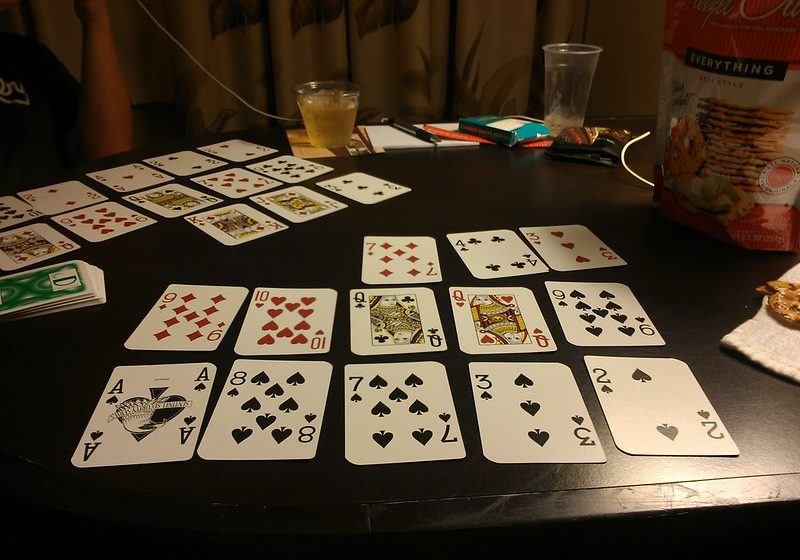Understanding Chinese Poker: Rules, Hands, and Scoring Explained

The Basics of Chinese Poker
Chinese Poker offers a unique blend of simplicity and excitement, making it an attractive choice for both casual and seasoned players. Unlike Texas Hold’em or Omaha, Chinese Poker does not rely heavily on strategic betting or bluffing, but rather centers around skillful arrangement of cards and a good dose of luck.
In Chinese Poker, games are quick and straightforward—there are no betting rounds, no community cards, and no need for a poker face. The objective is to organize your cards in the best possible way according to traditional poker hand rankings.
How to Play Chinese Poker: Step-by-Step Guide
A standard game of Chinese Poker involves two to four players and uses a regular 52-card deck. Each participant receives 13 cards dealt face down. The challenge is to divide these 13 cards into three distinct hands:
– Back hand (also called the bottom or rear hand): 5 cards
– Middle hand: 5 cards
– Front hand: 3 cards
Here’s the arrangement rule: the back hand must be the strongest of your three hands, followed by the middle hand, which must be weaker than the back hand but stronger than the front hand. The front hand (with just three cards) should always be your weakest.
– There is only one round of play, with all hands formed at the same time.
– No betting takes place during standard gameplay.
– There’s no focus on reading opponents or “tells.”
If you are playing for money, bets must be placed before any cards are dealt—this keeps things simple and fast-paced.
Chinese Poker Hand Arrangement: Hierarchy Explained
Arranging your 13 cards correctly is vital. The three required hands must obey a specific order of strength:
– Back hand: strongest (5 cards)
– Middle hand: second strongest (5 cards, weaker than back but stronger than front)
– Front hand: weakest (3 cards)
Misarranging your hands—such as making your middle hand stronger than your back—results in a foul, also called a miss-set. This means all your hands are considered dead for that round, and you lose automatically, usually with additional penalty points.
How to Determine the Winner in Chinese Poker
Once all players have set their hands, everyone reveals them simultaneously. Each player’s back, middle, and front hands are compared against the corresponding hands of each opponent:
– Back vs. back
– Middle vs. middle
– Front vs. front
The winner of each hand comparison earns a point. The player with the highest total points at the end of the round wins.
Scoring System in Chinese Poker
Chinese Poker uses a point-based system instead of betting chips for each round. Players agree on a value per point (for example, $1 per point) before the game starts, and cash settlements take place at the end.
– Win a hand comparison (back/middle/front) vs. an opponent: earn one point
– If you win two hands out of three against a player, you get two points.
Alternatively, players can wager a predetermined sum for a winner-takes-all round, and the highest scorer receives the prize.
Special Scenarios in Chinese Poker Scoring
Beyond standard points, there are several additional rules and ways to score in Chinese Poker.
Surrendering Your Hand
If your cards seem especially weak, you may opt to surrender before revealing your hands. Surrendering typically incurs a penalty of 2–3 points (2.5 points is common). Though this costs points, it can prevent an even bigger loss in a very unfavorable situation.
Royalties: Earning Bonus Points
Bonus points, known as royalties, add further excitement to Chinese Poker. These are awarded for achieving certain strong hands within your sets. The number of bonus points varies depending on the hand and its position.
| Hand Arrangement | Hand Type | Bonus Points |
|---|---|---|
| Back Hand | Royal Flush | 25 |
| Back Hand | Straight Flush | 15 |
| Back Hand | Four of a Kind | 10 |
| Back Hand | Full House | 6 |
| Back Hand | Flush | 4 |
| Back Hand | Straight | 2 |
| Middle Hand | Royal Flush | 50 |
| Middle Hand | Straight Flush | 30 |
| Middle Hand | Four of a Kind | 20 |
| Middle Hand | Full House | 12 |
| Middle Hand | Flush | 8 |
| Middle Hand | Straight | 4 |
| Front Hand | Three of a Kind | 9 |
| Front Hand | Pair of Aces | 2 |
Note that royalties for the middle hand are higher because arranging a powerful hand there is more challenging due to the hand-ranking order required.
Outright Wins and Sweeps
A special victory occurs if a player manages to create three straights or three flushes across their hands. In this case, they automatically sweep and receive three points from each opponent who did not surrender.
Example: Chinese Poker Scoring in Practice
To visualize how points tally up, imagine a four-player game over two rounds, with one player’s results summarized below.
| Round | vs Player 2 | vs Player 3 | vs Player 4 | Total |
|---|---|---|---|---|
| 1 | +2 | +1 | +3 | +6 |
| 2 | -1 | +3 | -3 | -1 |
| Totals | +1 | +4 | 0 | +5 |
After two games, Player 1 is owed points according to each opponent’s result.
Open Face Chinese Poker: The Most Popular Variant
A widely played version is Open Face Chinese Poker (OFC), which changes the dynamic by making hands visible and introducing turn-based play.
Key differences from regular Chinese Poker:
– Players receive cards one at a time instead of all 13 at once.
– Card arrangements are made face-up, visible to all.
– Players set their cards in turn order rather than simultaneously.
Once a player arranges their hand for a turn, the next player builds theirs, and so on. Once a hand is set, it cannot be altered—no takebacks are allowed.
Open Face Chinese Poker is more unpredictable, as players do not know which cards are coming next. This makes it easier to make mistakes (miss-sets) and increases the game’s risk and excitement.
The Fantasyland Feature in Open Face Chinese Poker
Fantasyland is a unique element exclusive to Open Face Chinese Poker. To access Fantasyland, a player must set at least a pair of Queens or better (such as QQ, KK, AA, or three of a kind) in their top three-card hand while still following the normal hand hierarchy.
Fantasyland advantages:
– In the following round, the qualified player receives all 13 cards at once and arranges their hands with complete information, a significant strategic edge.
– To remain in Fantasyland for another round, the player must form four of a kind or better in any row, or three of a kind in the top row.
– If these are not achieved, play returns to normal for that player in the next hand.
Fantasyland dramatically increases the chances of strong hands and can set up major sweeps, adding a thrilling dimension to the game.
Summary: Why Play Chinese Poker?
Chinese Poker stands out for its fast pace, easy-to-learn format, and a focus on card-handling rather than betting strategy or psychological tricks. The game is very beginner-friendly, highly social, and can be played casually in almost any setting.
At its core, the appeal of Chinese Poker lies in mastering the hand hierarchy and leveraging luck—while remembering that a single foul can turn a winning position into a loss. Scoring systems are easy to grasp, but advanced options like royalties, surrenders, and outright wins add layers of depth for experienced players.
Open Face and the Fantasyland rule introduce extra excitement for those seeking more strategic play. Whether for fun or real stakes, Chinese Poker is a compelling alternative to traditional poker games, blending luck, skill, and fast action for enjoyable gameplay.








